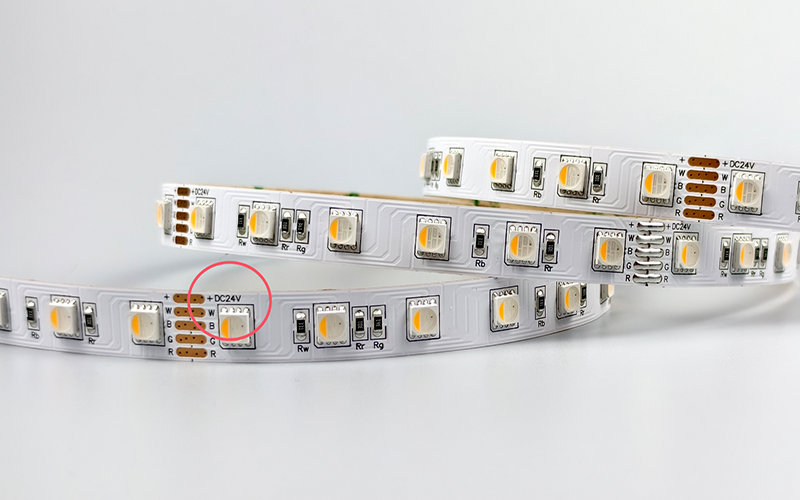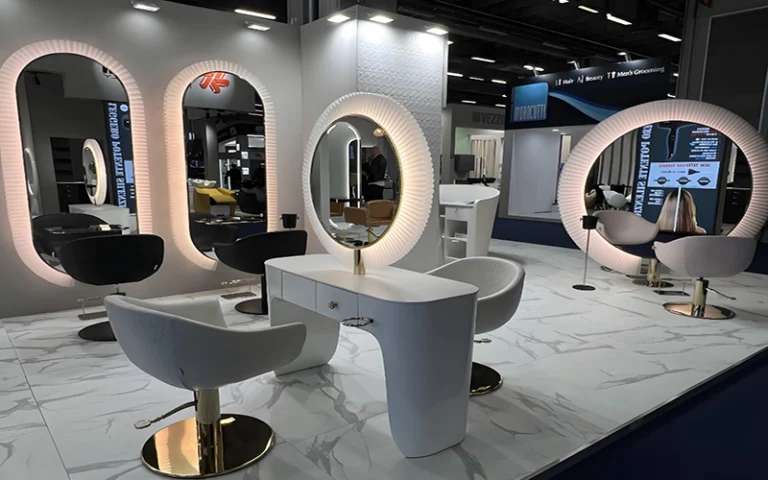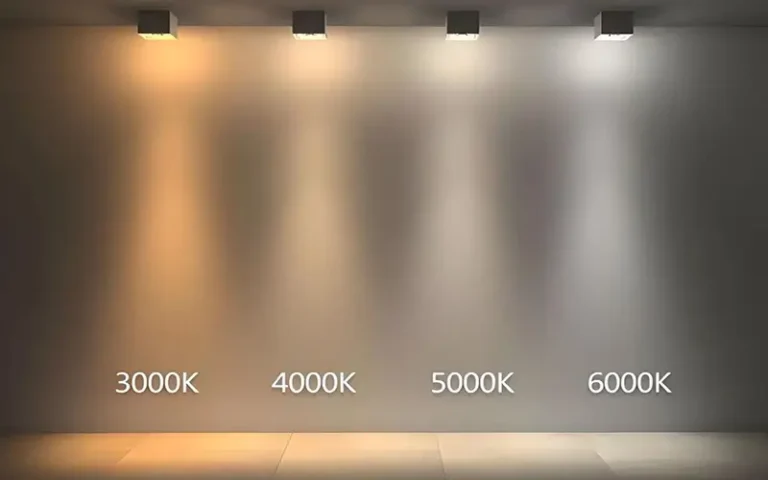Which is Better, 12V vs 24V LED Strip Lights?
When choosing LED strip lights, there are many low voltage options to choose from, 12V vs 24V vs 36V vs 48V. So choosing the right LED strip voltage can significantly impact the functionality, efficiency and longevity of your lighting project.
LED strip lights are popular for their versatility and energy efficiency, but choosing between 12V and 24V LED strips is critical for specific lighting needs. So, how to choose between 12V and 24V LED strip lights? Which one is better? More details, you also check the link 12V or 24V LED Strip, Which is Better?
Introduction to 12V vs 24V LED Strip Lights
LED light strips are a flexible, customizable lighting solution that come in different voltages, with 12V and 24V being the most common.
These options are perfect for a variety of indoor and outdoor projects, including under-cabinet lighting, accent lighting, and even outdoor landscape lighting. It’s important to understand the difference between 12V and 24V LED light strips, as each voltage offers unique benefits depending on the application.
Understanding Voltage in LED Strip Lights
In LED strip lights, voltage dictates how far the current can travel without losing power, affecting the strip’s performance. Higher voltages, like 24V, allow electricity to flow further with less resistance, making 24V LED strips better for longer installations or continuous runs. In contrast, 12V strips are suitable for shorter lengths and areas that require frequent cutting or customization.

Advantages of 12V LED Strip Lights
12V LED strip lights offer several benefits, particularly for projects requiring more detailed customization and flexible placement. About 12V more details, pls read 12V LED Ribbon Lights: Powering and Wiring
- Ideal for Short Runs: The 12V LED strip’s lower voltage makes it ideal for shorter lighting runs where voltage drop is less of a concern.
- Easy to Customize: Due to their short cut intervals, typically every 2 inches, 12V strips allow for precise adjustments, making them ideal for smaller or intricate installations.
- Compatibility: 12V LED strips are compatible with a wide range of 12V power sources, often making them easier to integrate into existing setups.
- Lower Heat Generation: 12V LEDs usually generate less heat, making them safer for installations in enclosed or confined spaces.
Advantages of 24V LED Strip Lights
24V LED strip lights bring unique advantages, particularly for projects requiring longer runs and higher brightness levels.
- Extended Run Lengths: 24V LED strips are better for longer runs because they suffer less from voltage drop. This allows them to maintain brightness consistency across extended lengths.
- Energy Efficiency: Since 24V LED strips require lower current to deliver the same amount of light, they can be more energy-efficient in certain applications, especially when paired with a 24V power supply.
- Higher Brightness Options: Many high-output LED strips use 24V power to achieve greater brightness levels, making them a great choice for spaces needing powerful illumination.
- Reduced Wiring Needs: Higher voltage means lower current, which can reduce wiring complexity and costs, especially for large installations.
Differences Between 12V and 24V LED Strips
The primary difference between 12V and 24V LED strips is their operating voltage. A 12V LED strip uses a 12-volt power source, while a 24V strip requires a 24-volt power supply. This difference in voltage affects factors such as brightness, length limitations, and power efficiency. Which can influence which strip light is best suited for a particular project.
- Cuttable Lengths: 12V strips are cuttable in shorter intervals,, allowing for greater flexibility in customization.
- Voltage Drop: Voltage drop can impact the brightness and efficiency of LED strips. In general, 24V LED strips experience less voltage drop over long distances compared to 12V strips. Making them a better choice for extended runs.
- Power Requirements: 24V LED strips require higher voltage but lower current, making them more efficient in some applications compared to 12V strips.
Why is Voltage Drop So Important for 12V vs 24V LED Strip Lights?
There are various electronic parts on the LED light strip, such as LED patches, resistors, etc. These parts will cause voltage consumption, and the more parts the voltage flows through, the more voltage is consumed.
For example, the voltage at the starting position is 12V, and after running two or three meters, the voltage drops to 10V or even lower. In LED lighting, this is specifically manifested as a decrease in LED brightness, and if it is a white light LED light strip, there will also be a color change.
Therefore, the maximum running length of low-voltage 5-24V LED light strips is about 15-20m. The solution to the voltage drop is to supplement the power input where the LED light strip voltage drop occurs, but this will increase the cost of the low-voltage transformer.
However, the higher the voltage, the longer the strip can run. Just like when you are tired, you can only run one lap outdoors, but when you have enough energy, you can run five laps. The same.
Therefore, high-voltage LED strip lights are generally rolled in a length of 50 meters or even 100 meters, and the power and LED brightness at one end are almost the same.

Choosing the Right LED Strip for Your Needs
When selecting between 12V and 24V LED strip lights, consider the specific needs of your project, including desired brightness, length, and placement.
- Brightness Requirements: If you need a high level of brightness. Such as for task lighting more, 24V LED strips are generally more powerful.
- Project Length: For long runs, 24V LED strips are more efficient as they maintain brightness over greater distances without needing additional power sources or amplifiers.
- Installation Environment: For tight spaces or smaller areas. 12V strips may be easier to fit and manage due to their lower voltage and greater flexibility in cutting lengths.
Comparing Power Efficiency: 12V vs. 24V LED Strip Lights
Power efficiency is an important and worthwhile consideration, especially in applications where LED strips are used for extended periods of time. Both 12V and 24V LED strips are energy efficient, but 24V strips are generally more efficient at using power in long-running or high-brightness applications. This is because they have lower current requirements and lower voltage drops, meaning they can run longer with less energy loss.
However, in smaller or shorter applications, the difference in power efficiency between 12V and 24V strips may be negligible. Evaluate the energy needs for your specific application to ensure the most cost-effective solution.
Installation and Compatibility: 12V vs. 24V LED Strip
The installation process and compatibility requirements differ slightly between 12V and 24V LED strips. Understanding these factors will help ensure a smooth and effective installation. How to choose the power supply, pls read How to Choose LED Power Supply for LED Light Strips?
- Power Supplies: A 12V LED strip requires a 12V power supply, while a 24V LED strip needs a 24V power source. Ensuring proper voltage compatibility is crucial, as using the wrong power supply can damage the LED strip.
- Wiring and Connectors: Due to its lower current, 24V wiring can be thinner, which can make installation more convenient in some applications. Always verify that connectors and controllers are compatible with the voltage of your LED strips.
- Dimming Compatibility: Dimming capabilities may vary depending on the voltage. Some dimmers are compatible with both 12V and 24V LED strips, while others are specific to a particular voltage, so check your dimming setup in advance.
Conclusion: Which Voltage is Right for You?
The choice between 12V vs 24V LED strip lights ultimately comes down to your specific needs and project requirements. For most residential applications, 12V LED light strips offer a good balance between safety, flexibility, and performance. However, for larger commercial installations or projects that require higher power output and longer run times, 24V LED light strips may be a better choice.
ESSENLED offers a range of high-quality LED lighting solutions, including 12V and 24V light strips, to suit a variety of needs. By understanding the differences and evaluating the specific requirements of your project. You can select the best LED strip lights voltage for a successful and long-lasting lighting installation.
FAQs
24V LED strips are generally more efficient than 12V strips. 24V LED strips are usually used over long distances. They have a smaller voltage drop, which means the brightness remains consistent across the strip. This makes them ideal for longer installations.
Not necessarily. The brightness of an LED strip is determined by the type and density of LEDs, not the voltage. If the LED configuration is the same, both 12V and 24V strips can achieve the same brightness level.
Yes, both 12V and 24V LED strips can be cut. However, they have different cut points. For 12V strips, the cut point is usually every 3 LEDs. While for 24V strips, the cut point is usually every 6 LEDs.
Both 12V and 24V systems are considered safe systems for low voltage applications. However, they still need to be matched with a suitable power supply for lighting. In short, there is no need to worry about safety issues with either voltage.








